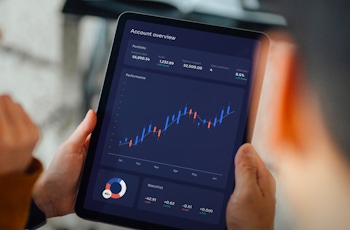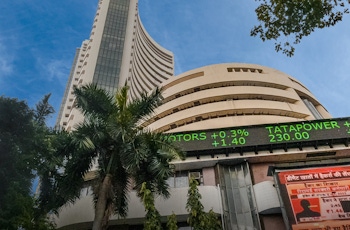
The lowdown on India
As we discussed in a recent article, emerging markets (EM) now account for around 41% of the world’s total output1 and are expected to have robustly faster GDP growth compared with developed markets over this year and next. Beyond growth, EMs offer some compelling investment opportunities through dynamic, world-leading businesses across a range of industries, as well as favourable demographics, amongst other things.
In this article, we focus on India – a global economic and geopolitical heavyweight in the making.
With a population of almost 1.5 billion2, India surpassed China as the world’s most populous nation in 2023, a position the UN expects it to maintain to 2050. The country has long faced a significant poverty challenge. But over the past decade, progress has accelerated, with 171 million citizens moving above the poverty line3. This achievement demonstrates India’s ongoing structural transformation.
Global economic growth is expected to be 3% in 2025, indicating a slowdown compared with the 3.3% growth rate in 20244. Yet India’s economy is predicted to grow by 6.4% in 2025 and 20265. Additionally, India’s nominal GDP is now approximately $4.19 trillion, making it the fourth-largest economy in the world6 and marking a significant global economic shift.
With GDP nearing $4.2 trillion, India is now the world’s fourth-largest economy and is projected to grow at 6.4% annually through 2026.
Markets
Two of India’s own stock exchanges, Bombay Stock Exchange (BSE) and National Stock Exchange of India (NSE India), are in the top 10 largest stock markets by total capitalisation globally7. India’s weight in the MSCI Emerging Markets Index hit a record 20% in July 2024, second only to China, reflecting strong momentum and rising investor interest8. While, by August 2025, it fell to a two-year low of 16.2% and dropped to third place behind Taiwan9, it highlights India’s evolution into a hub for global capital and a key driver of emerging market performance.
India’s inclusion in major global bond indices marks a significant step in opening its previously restricted debt market to foreign investors. JP Morgan began adding Indian sovereign bonds in 2024, while Bloomberg announced its intention to add Fully Accessible Route (FAR) bonds in 2025.
Industry
India’s economy is diverse. According to data published in 2025 and covering 2013-2023, 43% of the country’s workforce was focused on agriculture10, but this industry only made up 16% of the country’s GDP. The largest segment of the county’s economy is the services sector, accounting for 50% of GDP11. Telecommunications, IT and software are among the leading industries within this sector.
The manufacturing sector is growing, aided by the Production Linked Incentive (PLI) Scheme – a policy designed by the Indian Government to enhance the country’s manufacturing capabilities and promote self-reliance in various sectors by offering financial incentives for measurable outcomes such as increased production and sales growth. The improvement has also been helped by the global supply chain diversification away from China. One of the most notable manufacturing examples is smartphone production, with mobile exports from India reaching $20.5 billion in 202412.
India is evolving into a hub for global capital and a key driver of emerging market performance.
Trade
India’s foreign trade is a key growth driver, with exports and imports spanning across nearly 190 countries. Between April and December 2024, total exports (goods and services) increased 6% year on year to $602.6 billion, while imports reached $682.1 billion13. Trade tensions are high between the US and India. Trump’s administration has imposed 50% tariffs on a wide range of Indian goods. This threatens roughly $48 billion of Indian exports in sectors such as textiles, gems and car parts, and India could face a resulting economic slowdown14. India is making progress in trade talks with the EU, while UK-India trade negotiations have also gained fresh momentum, reflecting the country’s approach to diversifying its trade relationships and mitigating the impact of US tariffs.
Politics and policy
India’s Prime Minister Narendra Modi returned for a third term in June 2024. However, his party lost its majority and now relies on regional allies within the National Democratic Alliance (NDA). While this has introduced greater negotiation in policymaking, the country’s key priorities of infrastructure, manufacturing, and digitisation remain.
Summary
Overall, India is a significant and growing power in the global economy. With GDP nearing $4.2 trillion, it is now the world’s fourth-largest economy and is projected to grow at 6.4% annually through 2026, significantly overtaking global averages. Poverty has decreased at an exponential rate, equity markets have reached record highs (though some gains have since moderated), and India’s inclusion in major bond indices suggests deeper financial integration and the chance of future growth. Meanwhile, manufacturing and trade continue to drive growth, even as political dynamics and global trade tensions present challenges.
References
1 International Monetary Fund, World Economic Outlook: A Critical Juncture amid Policy Shifts, 2025
2 World Population Prospects, 2024
3 Government of India, Press Information Bureau, 2025
4 Financial Times, 2025
5 World Economic Forum, 2025
6 Insights on India, 2025
7 MSCI, India: An emerging world market story, 2024
8 Business Standard, 2025
9 Forbes India, 2025
10 Statista, 2025
11 Statista, 2025
12 The Economic Times, 2025
13 Forbes India, 2025
14 CBS News, 2025.

















































































